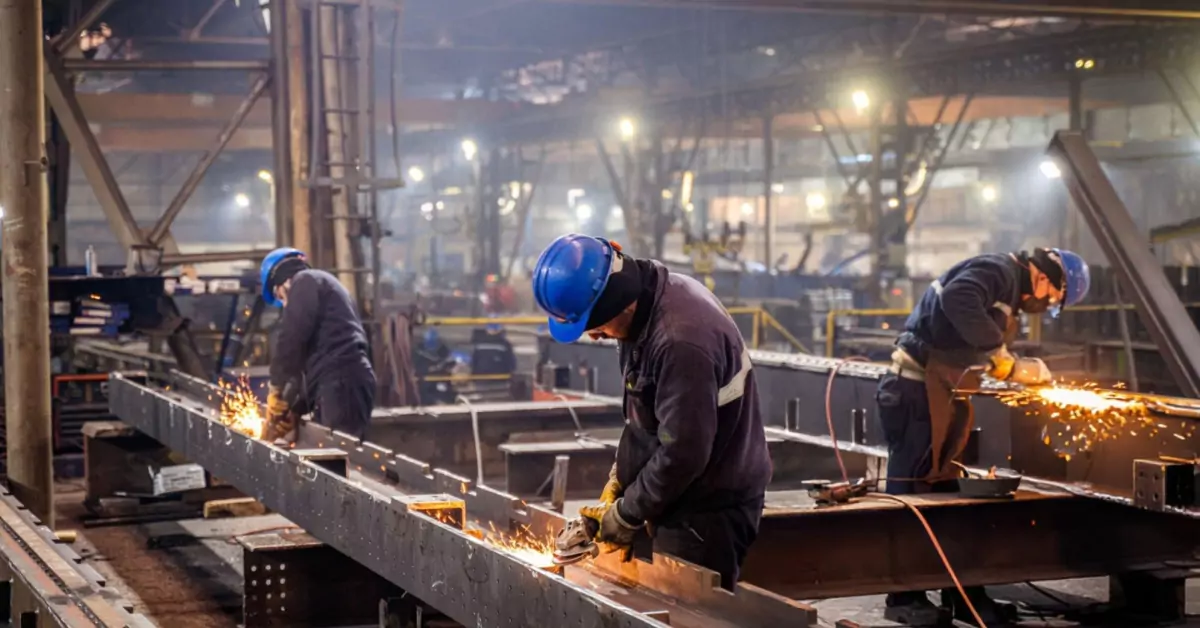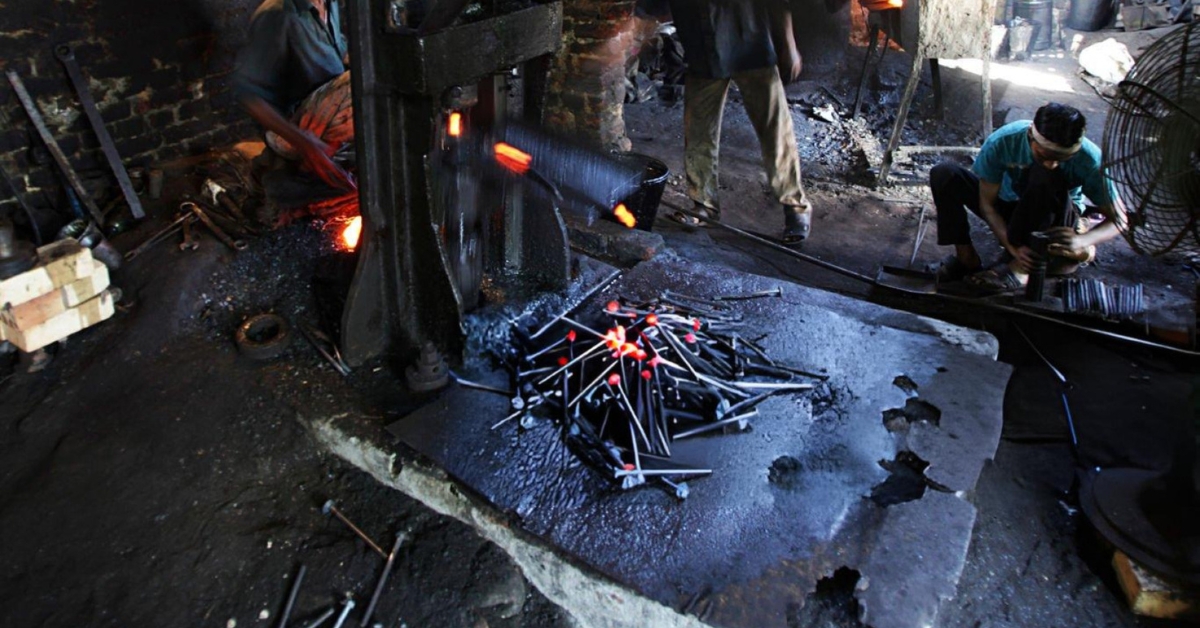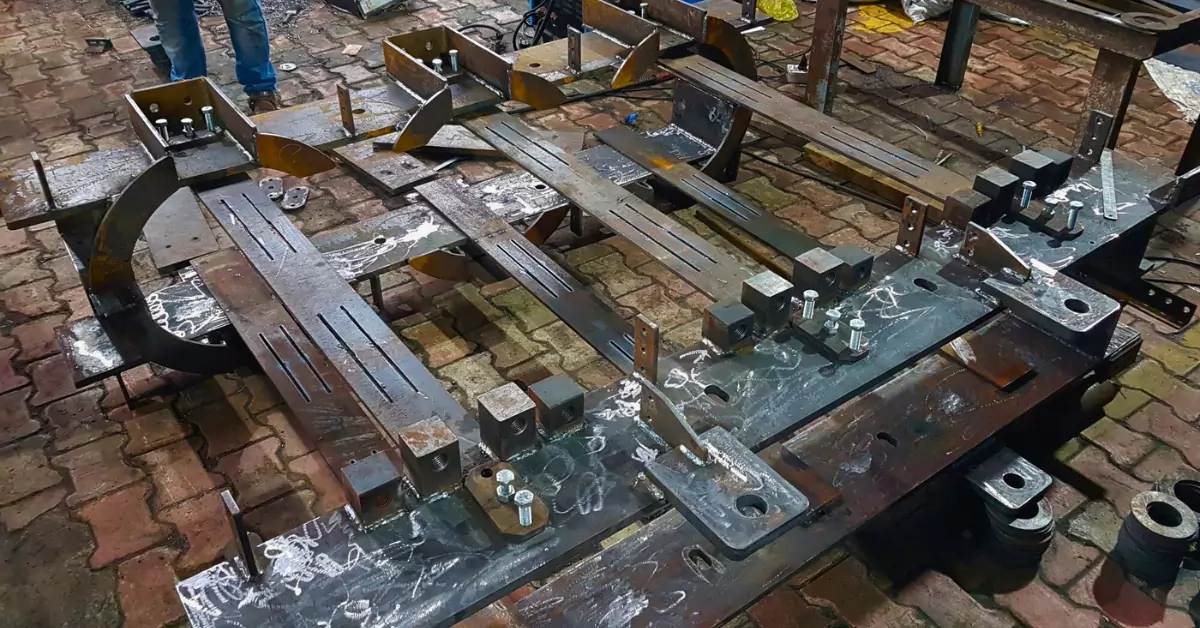Uses of Fabrication Materials: Key Types and Applications
Fabrication is an integral part of modern industrialization, in which various materials are created for use in objects and constructions. From massive skyscrapers to intricate electronic components, fabrication materials make up the things we use. This article explains the fundamental varieties of the materials that are used for fabrication as well as their characteristics, as well as the specific role of every one in the manufacturing process.

Introduction to Fabrication Materials
Materials used in the fabrication of fabrics range from composites and metals to ceramics and plastics. Each one has distinct characteristics including strength, flexibility, and durability or corrosion resistance that can be used for particular applications. At E.S. HAJI & CO., we take pride in providing high-end materials that meet the demands of both big business clients as well as smaller.
Metal Fabrication Materials
Metals continue to be at the forefront of manufacturing due to their toughness, durability and flexibility. Mild Steel (MS), Stainless Steel (SS) as well as Aluminium are some of the most commonly used metals employed in the fabrication process.
- Mild Steel (MS): It is well-known for its weldability as well as cost-effectiveness, MS is widely used for structures, machinery and automobile components.
- Stainless Steel (SS): Resistant to rust and corrosion, stainless steel is a preferred material in areas that are exposed to moisture like kitchens, and healthcare facilities.
- Aluminium: The aluminum is lightweight and resistive to corrosion, the aluminum is perfect for transport in aerospace, construction, and other applications.
Composite Fabrication Materials
Composites are materials designed to combine two or more materials in order to make a more durable product. The most common composites are fiber-reinforced polymers and carbon fiber composites each valued for their superior strength-to-weight ratios. Industries like automotive, aerospace manufacturing, and sports equipment greatly benefit from composites.
Ceramic Fabrication Materials
Ceramics are well-known for their toughness, heat resistance, and the ability to insulate. They are used for everything from engine parts to electronic components, Ceramics are able to perform even in extreme stress environments.
- applications: Industrial machines, medical devices and components for aerospace.
- Benefits: Ceramics are highly durable to corrosion and wear which makes them perfect for harsh conditions.
Plastic Fabrication Materials
The development of plastics has revolutionized the manufacturing process through their adaptability, cost effectiveness and light weight. Thermoplastics and thermosetting plastics are two types of plastics that each have distinct advantages.
- Thermoplastics easily moldable upon heating which makes them suitable for repeated manufacturing.
- Thermosetting plastics: Durable and hard upon setting, they are ideal for long-lasting structures.
Wood in Fabrication
Metals and plastics rule the day the market, wood is still a viable alternative for both design and construction uses. Plywood and MDF (Medium-Density Fiberboard) are particularly common for cabinetry and furniture.
- Benefits: Wood is renewable it is insulating, as well as adding visual warmth.
- applications: Used in architecture furniture, decorative items.
Fabrication Materials for Electronics
Electronics manufacturing requires extremely specific material. Silicon is widely used in transistors and semiconductors, while LEDs and optical components need materials such as gallium arsenide.
- applications: Smartphones, solar cells and various electronic gadgets.
- Relevance: High purity and exact tolerances are essential in electronic materials.
Fabrication Materials in Renewable Energy
The increasing use the use of alternative energy sources have created specific requirements in materials, specifically to make solar cells. Silicon-based materials are a favorite in solar cell manufacturing because of their excellent range of bandgaps, which can improve energy efficiency.
- Criteria to Select: Materials should be long-lasting as well as cost-effective and optimized to convert energy.
Fabrication Materials for Optical Applications
Optical components, including fiber optics, depend on specific material. The fiber optics’ core usually utilizes silica glass, which is prized by its purity and properties for light transmission. These materials are crucial in the field of telecommunications, as the quality of signals and their efficiency is of paramount importance.
Key Criteria for Selecting Fabrication Materials
Selecting the appropriate fabrication material is based on variables such as durability, safety and cost. In high-stress areas, you may require steel or ceramic, while lightweight applications might use aluminum or plastics.
- Durability It determines the durability and requirements for maintenance of manufactured components.
- cost: Balancing quality with the affordability.
- Safety and compliance: Ensuring materials meet standard industry practices.
HSN and SAC Codes
HSN (Harmonized System of Nomenclature) and SAC (Services Accounting Code) codes streamline tax compliance during fabrication. These codes classify items and services. They aid with clear tax documents.
Fabrication Materials in Material Handling Equipment
Handling of materials is crucial in sectors like logistics and warehousing. Composites and metals that are durable are often used to handle continuous wear and heavy load.
Raw and processed. Processed Fabrication Materials
Manufacturing typically is started with raw materials and then they are refined according to specific needs. Raw materials are economical, but they require additional work. However, processed materials are convenient and provide uniformity.
Custom Fabrication Materials
In order to meet the specific needs of industrial applications Custom materials can be tailored in accordance with specific requirements. Custom steel alloys or coated plastics can be used to improve endurance, weather resistance or visual appeal.
Fabrication Process and Material Selection
The manufacturing process requires meticulous selection of materials and planning. Material that is not properly aligned can cause fragile or ineffective products. E.S. Haji & Co. offers advice on selecting materials to guarantee optimal production results.
Material List for Fabrication Work
An extensive list can help streamline the process of fabrication. Steel plates, welding rods, and bolts are only a handful of things that are typically on the list to be used in metal fabrication.
GST for the fabrication Work with Materials
GST is applicable to various fabrication-related services, particularly where materials are used. Being aware of fabrication-specific GST rates aids in ensuring that you are in compliance with the tax law.
Common Fabrication Tools and Equipment
Important tools include welding machines, cutting torches, and grinders. Modern methods such as laser cutting and 3D printing provide new possibilities for modern manufacturing.
Conclusion
Materials for fabrication vary greatly and are each designed for specific commercial and industrial uses. Through understanding the characteristics and uses of various materials such as ceramics, metals and polymers, business owners are able to make better decisions, reducing cost and maintaining the product’s durability. At E.S. Haji & Co., our goal is to supply high-quality products that satisfy the diverse requirements of different industries. This makes our company a reliable partner for each fabrication job.



